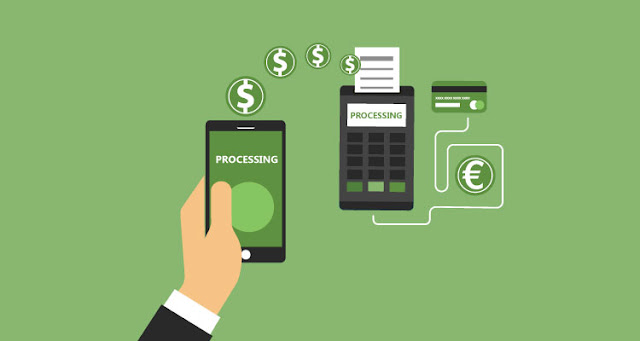Why mobile payments are safer than cash or credit
The simple advice you learned when you first began online shopping is don’t enter your credit card information on a site that doesn’t begin with “https” isn’t enough anymore. Turns out, “https” only sends your payment info securely across the Internet. It doesn’t mean the party you’re sending it to is trustworthy, or secure. If you haven’t signed up for mobile payments, you aren’t alone. Even though mobile payments and virtual wallets have been proven to be secure and convenient, many people have yet to embrace the technology. In fact, mobile payments and virtual wallets are safer than the traditional forms of payment, like cash and credit cards. but how much safer is it exactly ?
Luckily, it’s getting a lot safer to buy something over the web, thanks to new online payment systems that are more secure than using a credit card. Apple Pay is one, and it launched on Macs a month ago after having been limited to mobile for the past two years. Samsung Pay and Android Pay also allow for more secure transactions, and are available on smartphones. You should be using these on any sites or apps that support them.
Paper cash:
Of course, there is nothing wrong with carrying cash, but mobile payments can provide convenience. Having all of your payment methods available on a phone removes the need to carry a bulky wallet and if your wallet is stolen, you have no way to get your cash back. Big bulky wallets and wads of cash draw the attention of unscrupulous people who are more than willing to do what they can to get their hands on your money. Since cash is used so infrequently, many merchants do not carry much change. Many merchants do not feel safe carrying excessive amounts of cash in their registers or safes, simply because of the security threat it creates.
Plastic credit cards:
When a customer uses a credit card, there is always a chance that someone can see it. That person might not be standing behind the customer; that person could be using a store camera to capture numbers. Mobile payments and virtual wallets use what is called a transaction token, which is a random number generated for each transaction. It can only be used once, so if a thief tries to use it again, the number is immediately invalid. The little chips in new credit and debit cards do the same thing, but the numbers are still there, emblazoned on the card, ready for someone to take.
So what is the added security layer does mobile payments provides?
Mobile payments provide more than just an added layer of security against theft. They offer benefits that cash cannot provide. First, mobile payments provide shoppers with a record of purchases that makes it easy to trace where money goes. Shoppers can use this information when they need to make returns. They can also use it when they have unauthorized transactions or disputes.
Another important factor that makes mobile payments and virtual wallets safer than credit cards is the secondary authentication. When you pay with a credit card, the card is swiped and then you sign. But, when you pay with a mobile app, you use a thumbprint or a code. If someone wants to steal your information, they would need your phone, the password to your app, and your thumb (fingerprint). That’s rather difficult to accomplish.
Forbes reported some surprising information regarding mobile payments in an article from 2014. Because of mobile payments and credit cards, pick-pocketing has dropped significantly. In fact, pick-pocketing is no longer a reportable crime in New York City. Instead, they collect records of stolen smartphones.
How does this mechanism work?
Unlike regular online transactions, payments made through Apple Pay, Samsung Pay, or Android Pay don’t use your real credit card number, so vendors never get access to it. These services make use of a technology called payment tokenization, which converts your credit card number into a cryptogram that’s worthless to hackers. Ordinarily, hackers just need your credit card number, CCV, and expiration date to commit fraud, and those are a lot easier to come by.If someone taps into the merchant’s system and steals these tokens, your real credit card doesn’t have to be reissued,. That helps prevent the chaos that ensued after big chains like Target saw their systems hacked. Plus, stores are updating their payment terminals to accommodate those new chip cards, and many are choosing systems that support mobile payments, too, while they’re at it.
You may be wary of storing your credit card info on your phone, but that’s not what happens here. Your real number doesn’t live on the phone, though it looks and functions the same as real plastic. That means a vendor never sees your credit card info either. And, of course, you get the convenience of not having to carry your wallet around. You can run to the grocery store with just your phone, or buy something online without pulling out your card.
Of course, this technology isn’t available on every site. A mom and pop t-shirt shop is not likely to support Apple Pay. And unfortunately Venmo doesn’t use payment tokenization. It’s similar to sharing your credit card with any other merchant. It is suggested that for apps that don’t support payment tokenization, consumers use a credit card rather than a debit card. At least you’ll get better protections in the case of fraud.
Are Mobile Payments Geared Toward Small Businesses?
Mobile payments have proven to be safe, but there is a problem that has yet to be solved. Unfortunately, most businesses have yet to get the hardware that is needed to accept mobile payments. Apple Pay and Samsung Pay can only be accepted through special merchant terminals. These look like the typical credit card terminals, but they have a special near-field communication technology that allows users to tap their phones to make a payment. These terminals are not free and merchants still have to pay credit card companies to finish the transactions. This means that merchants have more fees to pay, as they pay for every transaction that goes through their terminals.




Comments
Post a Comment